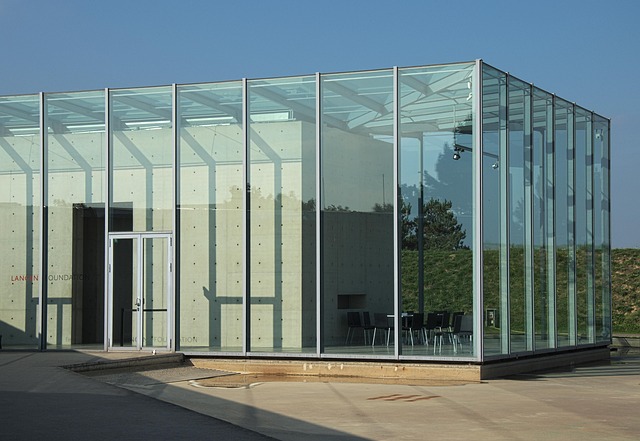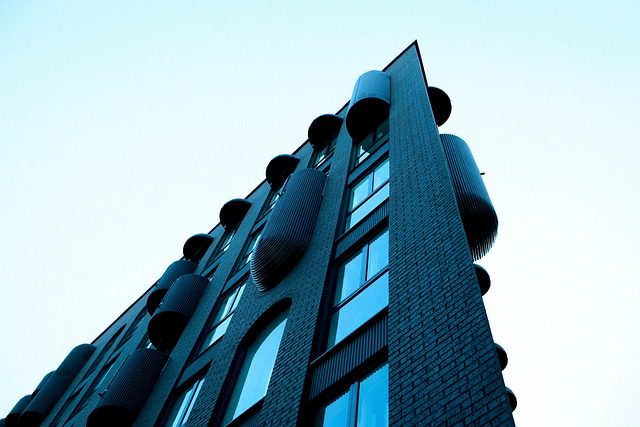Residential foundation cracks require prompt attention due to potential structural issues. Causes include settlement, earth movement, or age-related deterioration, leading to various crack types (hairline, diagonal, vertical, horizontal). Differentiating between normal fluctuations and serious problems is crucial for selecting effective Foundation Solutions. Homeowners have two options: temporary fixes or long-term solutions like piering and wall anchors. Modern technologies offer efficient, lasting repairs with minimal disruption using methods like epoxy injection and carbon fiber wrapping. Cost considerations and professional assessments are vital in choosing the best Foundation Solutions to prevent further damage and ensure home stability. Regular maintenance and addressing moisture issues also protect against foundation cracks.
Residential foundation cracks can be a common concern for homeowners, but understanding and addressing them promptly is key to maintaining a safe and stable living environment. This comprehensive guide explores various aspects of foundation crack solutions, from identifying different types of cracks and assessing their severity to exploring modern repair technologies and cost-effective options. Discover temporary fixes versus long-term solutions, learn when professional intervention is necessary, and gain insights into preventative measures to safeguard your home’s structural integrity with effective foundation solutions.
Understanding Residential Foundation Cracks: Causes and Types

Residential foundation cracks can range from minor aesthetic issues to serious structural problems, requiring immediate attention and appropriate foundation solutions. Understanding the causes and types of these cracks is essential for effective prevention and repair. Common causes include settlement, earth movement (like earthquakes or expansive clay soils), poor original construction, and age-related deterioration. Settlement cracks typically result from drying soil or changes in hydrostatic pressure, while structural cracks are often indications of significant underlying issues.
There are various types of foundation cracks, such as hairline cracks, diagonal cracks, vertical cracks, and horizontal cracks. Hairline cracks, usually thin and shallow, are common due to normal settlement. Diagonal cracks, sloping inward, suggest soil movement or structural problems. Vertical cracks signal significant differential settling, while horizontal cracks near the foundation’s edge may indicate heave caused by expansive soils. Identifying the specific type of crack is crucial in determining the most effective foundation solutions for repair and stabilization.
Assessing the Damage: Identifying Serious Cracks

When assessing foundation cracks, it’s crucial to identify serious issues that require immediate attention from professional foundation solutions experts. While minor cracks might be normal and non-concerning, wider or deeper cracks can indicate more severe problems like structural damage. These serious cracks often appear as vertical or diagonal lines that extend across the foundation walls, floors, or ceilings. They may also manifest as uneven floors, leaning walls, or doors that won’t close properly.
In some cases, cracks might be visible only when standing in specific areas of the home, indicating settlement issues. If you notice any such cracks, especially if they are widening over time, it’s essential to consult a foundation solutions expert who can thoroughly inspect and diagnose the problem, providing tailored recommendations for effective residential foundation crack repair.
Temporary Fixes vs. Long-Term Solutions

When it comes to addressing foundation cracks, homeowners often face a choice between temporary fixes and long-term solutions. Temporary repairs, such as sealing or filling cracks with epoxy injections, can provide quick relief and prevent further damage in the short term. However, these methods do not address the root cause of the crack and are more like band-aids than cures. They may offer a quick solution, but they won’t ensure the structural integrity of your home over an extended period.
On the other hand, long-term foundation solutions focus on addressing the underlying issues that led to the cracks in the first place. This typically involves comprehensive inspections and engineering assessments to identify the cause, whether it’s soil settlement, improper construction, or other factors. Solutions like piering, underpinning, or wall anchors are then implemented to stabilize the foundation and prevent future damage. While these methods require a substantial investment upfront, they provide permanent fixes, ensuring your home’s structural integrity for years to come and eliminating the need for repeated repairs.
Structural Integrity: When to Call a Professional

Foundation cracks can be a concerning sight, indicating potential structural issues within your home. While some minor cracks might be normal and non-threatening, it’s crucial to understand when these defects warrant professional attention. The structural integrity of your home is paramount, especially regarding foundation health. If you notice wide or widening cracks, especially those that extend across multiple floors or walls, it could signal a more severe problem.
In such cases, seeking expert advice from foundation repair specialists is essential. They possess the knowledge and tools to assess the situation accurately. Foundation solutions often involve advanced techniques like underpinning, piering, or wall anchors to stabilize and strengthen the structure. Prompt action by professionals can prevent further damage and ensure your home remains a safe haven.
Modern Foundation Repair Technologies

Modern Foundation Repair Technologies have revolutionized the way we address foundation cracks, offering efficient and effective foundation solutions. Unlike traditional methods that relied heavily on labor-intensive manual work, contemporary techniques leverage advanced equipment and innovative materials to provide long-lasting repairs. One such technology is the use of hydraulic fracturing, which involves injecting a high-pressure mixture of water, sand, and additives into cracks to widen them and create a key for better adhesion of repair compounds.
Another game-changer is the integration of GPS and laser technology in foundation inspection and repair. These tools enable precise mapping of cracks, allowing for more targeted interventions. Additionally, modern polymeric injections can fill and seal micro-cracks, preventing their growth and promoting overall structural integrity. Such foundation solutions not only enhance the longevity of residential properties but also provide cost-effective repairs with minimal disruption to homeowners.
Non-Invasive Methods for Minimal Disruption

When dealing with residential foundation cracks, non-invasive methods offer a gentle approach for minimal disruption to your home and its structure. These techniques are ideal for minor to moderate cracks, providing effective solutions without extensive excavation or damage to the existing foundation. One such method involves the use of epoxy injection, where a specialized epoxy compound is precisely injected into the crack. This process fills and stabilizes the fracture, preventing further damage and movement. It’s a fast and efficient way to strengthen the foundation, making it suitable for various types of residential properties.
Another non-invasive solution is carbon fiber wrapping, which provides exceptional strength while allowing for minimal alteration to the exterior. Carbon fibers are flexible yet robust, making them an excellent choice for repairing cracks that may be subject to ongoing movement or stress. This method offers long-term durability and is environmentally friendly, as it requires no toxic chemicals or extensive renovation. By employing these modern foundation solutions, homeowners can achieve structural integrity without the need for invasive procedures, preserving the beauty and value of their homes.
Cost Considerations: Budgeting for Foundation Crack Repairs

When addressing residential foundation cracks, cost considerations play a significant role in choosing the most suitable foundation solutions. Budgeting for repairs is essential as it impacts the scope and type of work undertaken. The cost can vary greatly depending on factors such as crack size, severity, location, and the chosen repair method. Simple cracks might only require filling or sealing, which is more affordable, while complex cases involving structural repairs or underpinning can be significantly pricier.
It’s important to seek professional assessments to determine the exact needs and associated costs. Homeowners should research local market rates for foundation crack repairs, comparing quotes from multiple contractors. Proper planning and budgeting ensure that any chosen foundation solutions are both effective and financially feasible, promoting long-term stability and safety for the residence.
Preventative Measures: Strengthening Your Home's Base

Foundation cracks can be a significant concern for homeowners, indicating potential structural issues. However, proactive measures can help prevent these problems before they arise. One of the most effective ways to maintain a solid foundation is regular maintenance and inspections. This includes addressing any signs of moisture or water damage, as these can weaken the structure over time. Implementing proper drainage around your home and ensuring that downspouts direct water away from the foundation can also prevent cracks by reducing soil erosion and moisture buildup.
Additionally, reinforcing the soil around your home’s base with products like geotextiles or using mechanical anchors can provide extra stability. These preventative measures act as a shield against settling and shifting earth, which are common causes of foundation damage. By taking these proactive steps, homeowners can invest in their home’s long-term health and stability, thus saving time and money on costly foundation repairs in the future.
